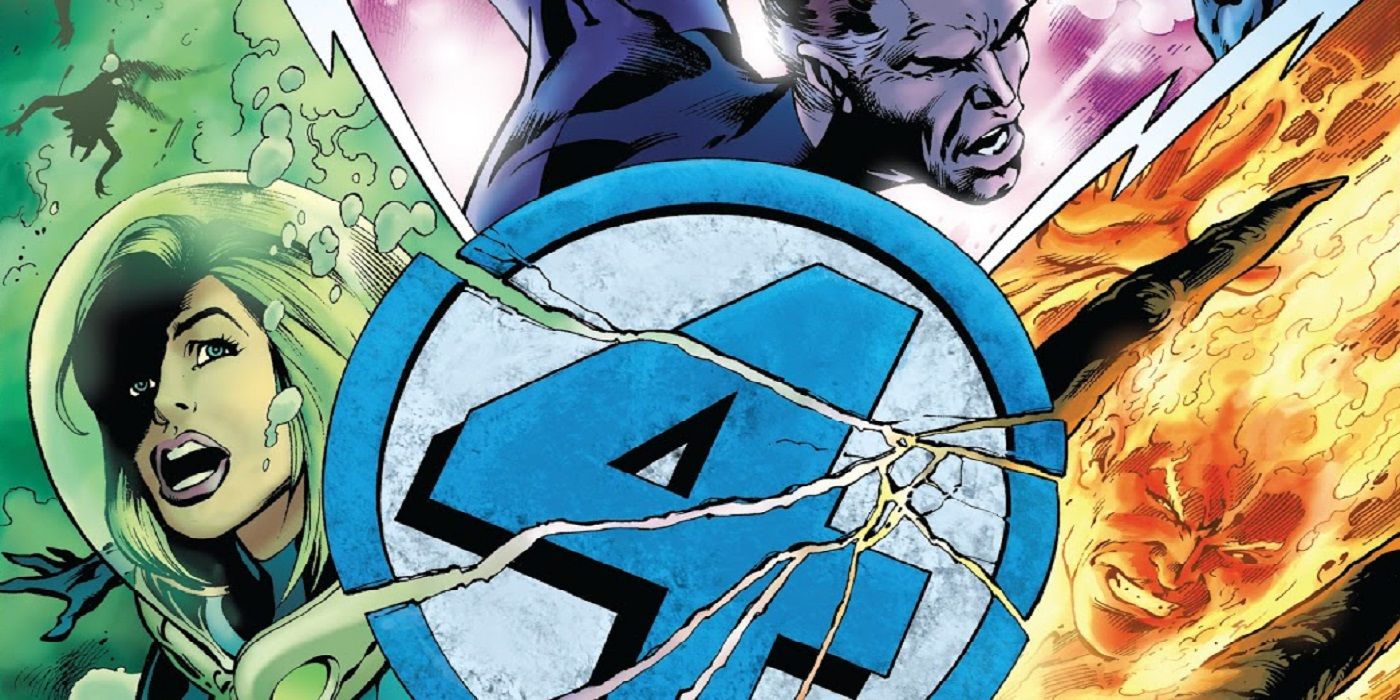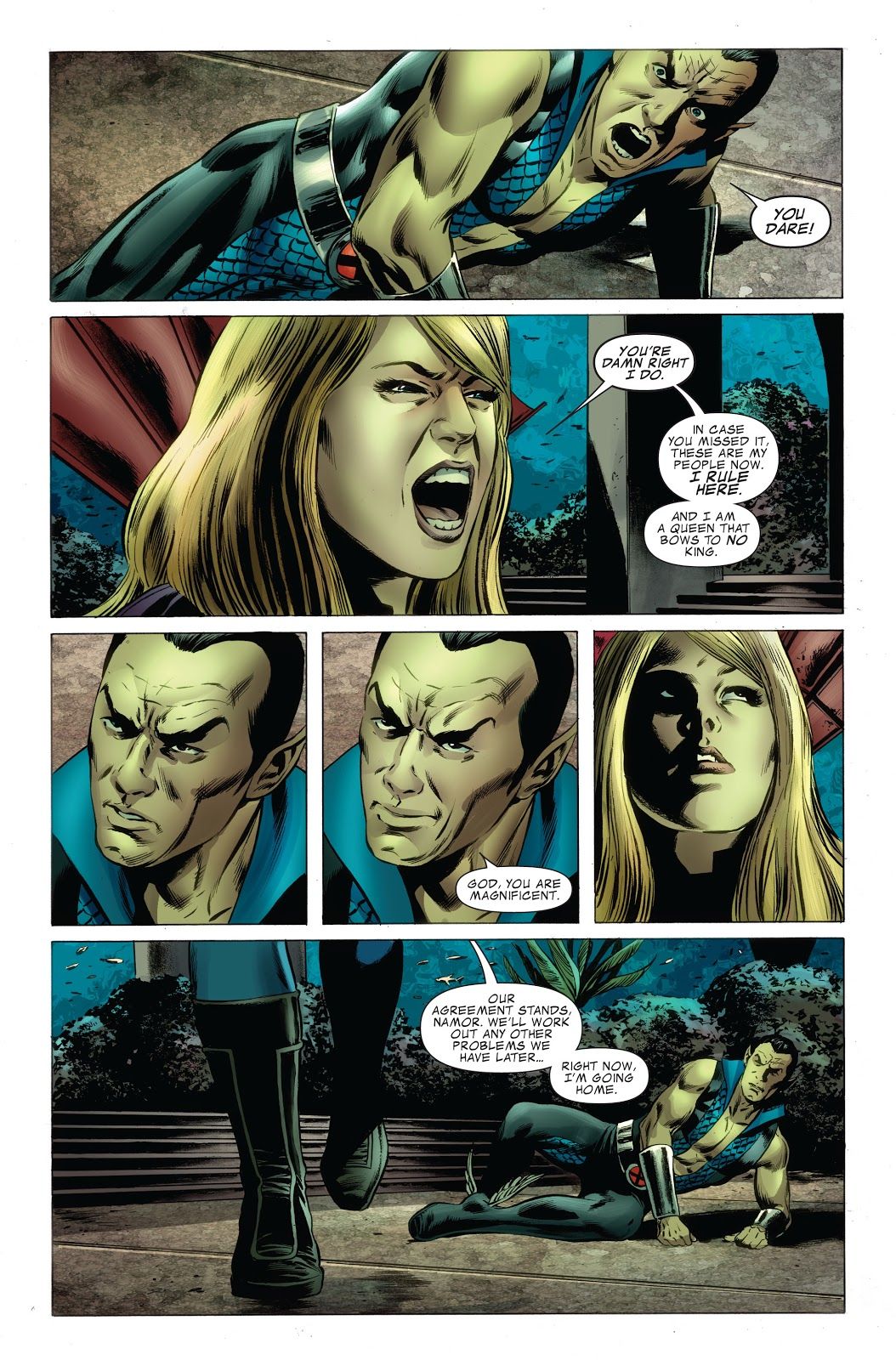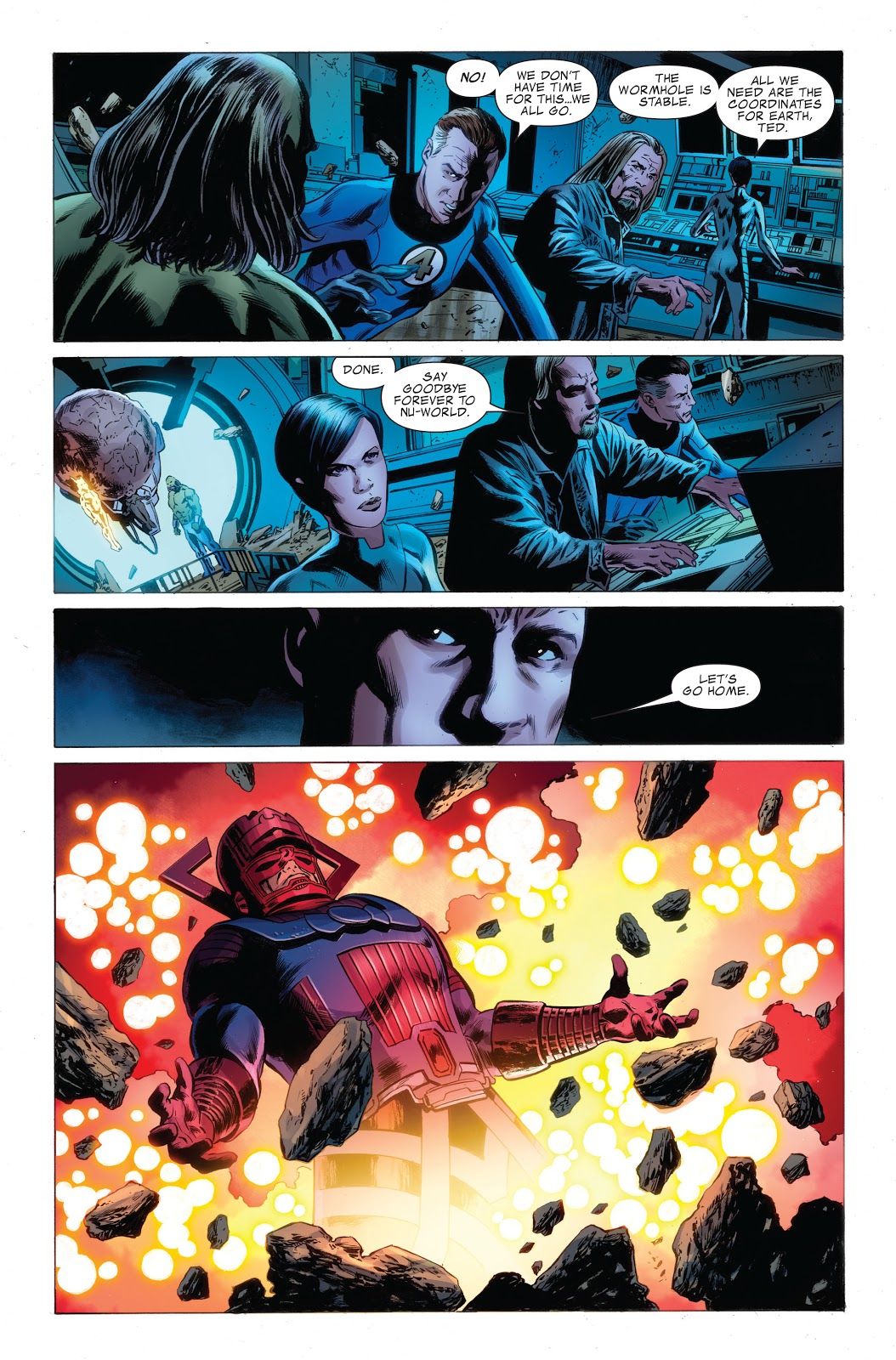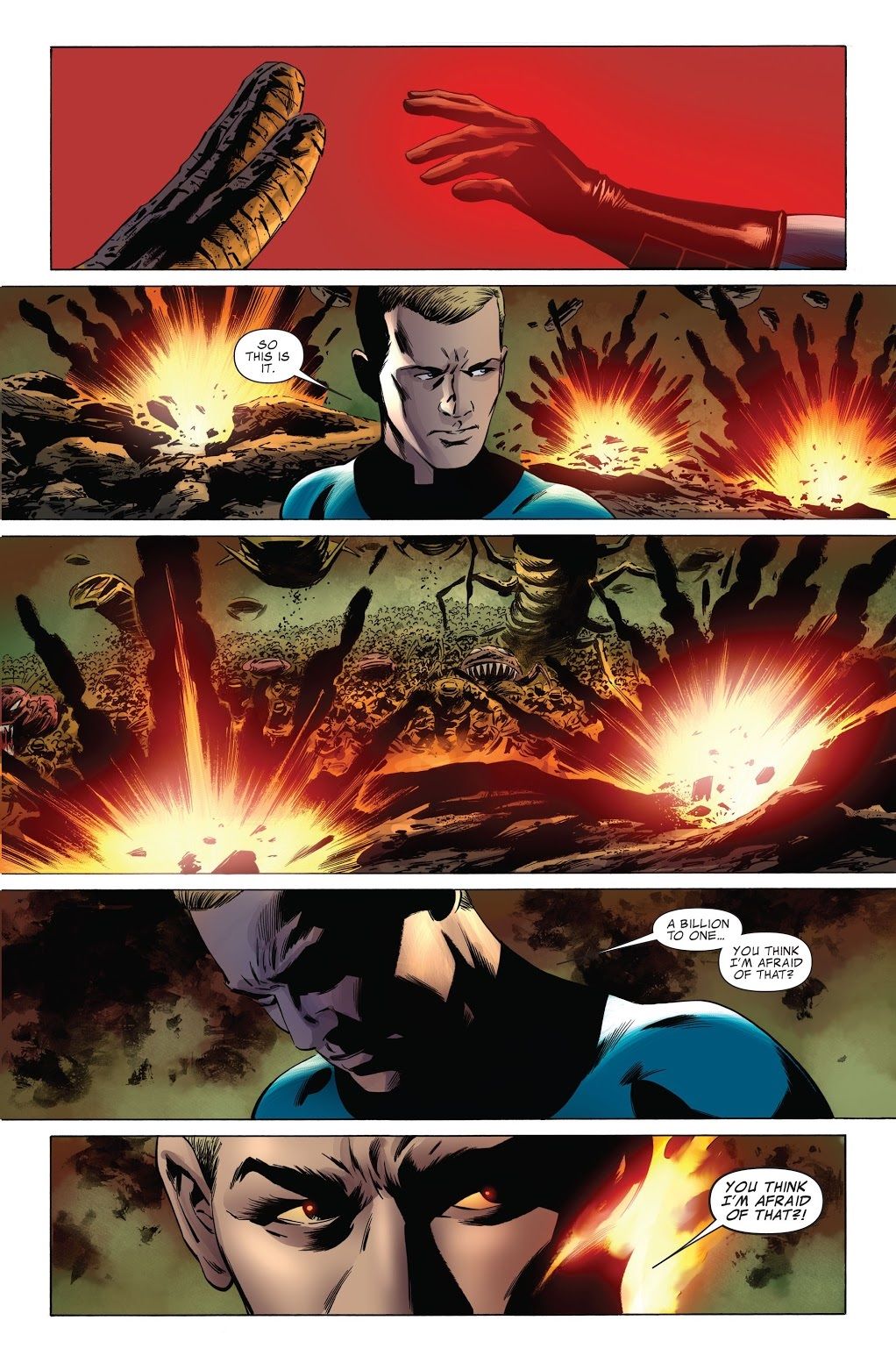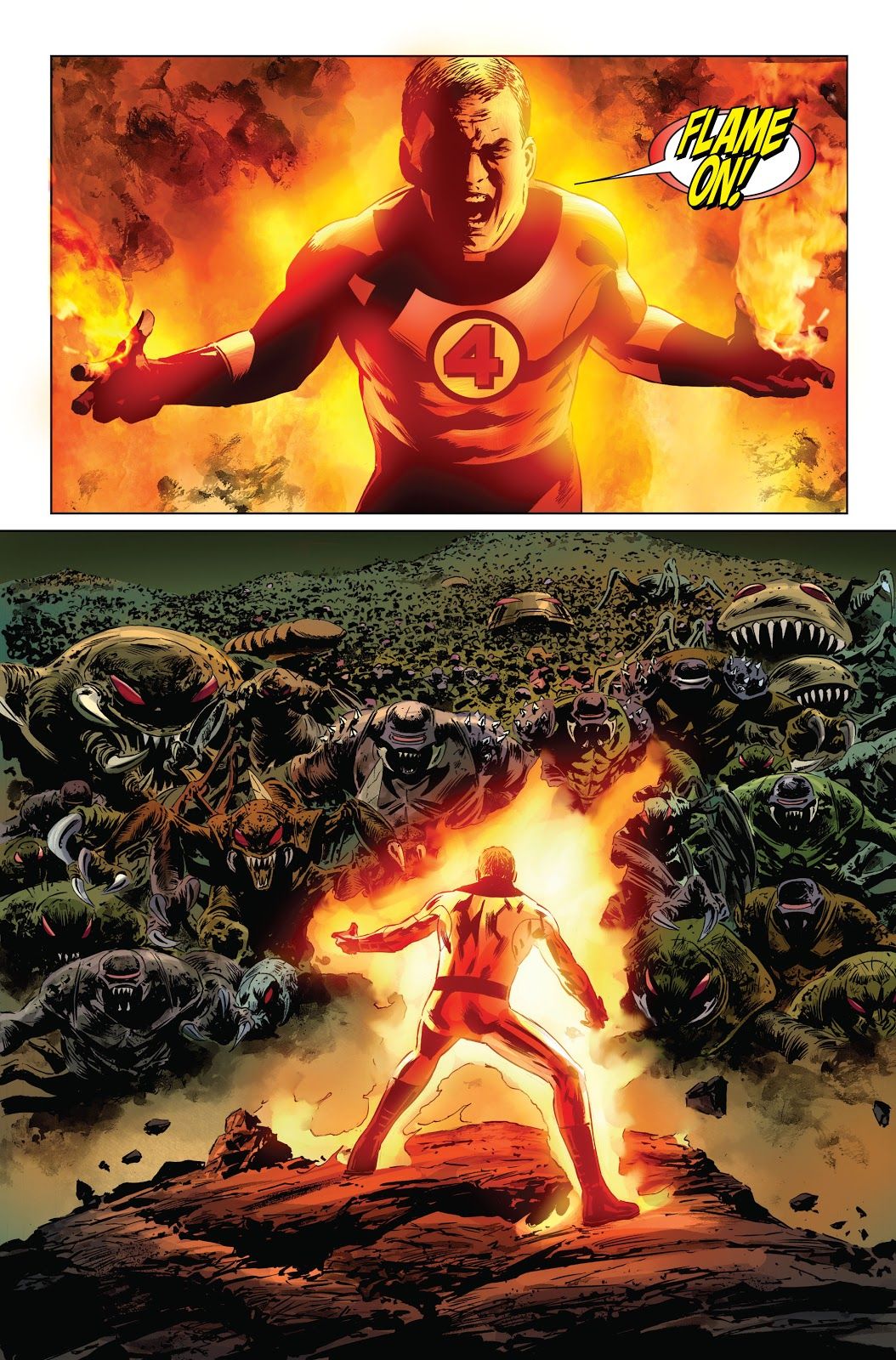This is "Look Back," a feature that I plan to do for at least all of 2020 and possibly beyond that (and possibly forget about in a week, who knows?). The concept is that every week (I'll probably be skipping the four fifth weeks in the year, but maybe not) of a month, I will spotlight a single issue of a comic book that came out in the past and talk about that issue (often in terms of a larger scale, like the series overall, etc.). Each week will be a look at a comic book from a different year that came out the same month X amount of years ago. The first week of the month looks at a book that came out this month ten years ago. The second week looks at a book that came out this month 25 years ago. The third week looks at a book that came out this month 50 years ago. The fourth week looks at a book that came out this month 75 years ago. The occasional fifth week looks at books from 20/30/40/60/70/80 years ago.
Today, we go back to January 2011 for Fantastic Four #587, the conclusion of the historic Fantastic Four story arc, "Three," by Jonathan Hickman, Steve Epting, Rick Magyar, Mike Perkins and Paul Mounts.
As a quick aside, aren't Paul Mounts colors always gorgeous? That guy is amazing. I was just so struck by the lushness of this comic book. Mounts is an outstanding talent.
ANYways, back to the story. Jonathan Hickman's run on the Fantastic Four began in Fantastic Four #570, and one of the main features in his run was the establishment of the Future Foundation, a collection of the most brilliant young minds in the Marvel Universe (that were not already part of programs or schools elsewhere in continuity), particularly Valeria Richards, the daughter of Mister Fantastic and Invisible Woman.
Similarly, Hickman's run involved introducing "lost" civilizations that had some sort of tie to established Fantastic Four groups, including the Tribes of Old Atlantis.
Okay, so now that they were established, Hickman led up to the storyline "Three" (with gorgeous countdown cover art by the book's regular cover artist, the legendary Alan Davis), which introduced the concept that the Fantastic Four were going to encounter three different major threats, all based on old Fantastic Four set-ups, and that at the end of the event, the Fantastic Four would be down to three members due to one of the major threats leading to the exit of the member from the team (and presumably the mortal plane).
The Invisible Woman was sent to go deal with a conflict involving Namor and Atlantis and the Tribes of Old Atlantis, Mister Fantastic headed off to Nu-World (a world designed to hold the rich and powerful when Earth became too desolate to live on. Instead, a time machine was used to bring the citizens of a future barren Earth back to live on it. It was powered by the corpse of a future Galactus) when Galactus discovered how Nu World was powered and he was NOT happy. Finally, Human Torch, Ben Grimm (through the Future Foundation's help, Reed Richards had discovered a way for the Thing to become human for a week each year. Ben was still human) and the Future Foundation had to fight off a new Anniilation Wave from the Negative Zone.
First, Sue Richards resolved her storyline and forced Namor to hold to a new treaty and she went home, so Sue was not the member who was going to die...
Next, the Nu World citizens all sort of bonded into one being, allowing Reed to evacuate the entire planet all in one fell swoop. So he was able to get home, which meant that Reed was not the member who was going to die (Galactus, by the way, decided to not eat Nu World. Instead, he just destroyed it out of spite for its power source)...
So that left Johnny, Ben and the Future Foundation. After holding off the initial wave of attackers (with help from Franklin Richards restored powers), Valeria and the other geniuses were able to find a way to close the gate to the Negative Zone, but somebody would have to stay behind to close the gate. Ben, of course, instantly volunteered, but Johnny then threw him out of the way. Ben's time was just about up, but I think he was so distraught that he turned back into the Thing a bit early. The two best friends shared a moment of reflection together...
Before Johnny turned and faced the impending horde of attackers, a literal billion to one chance for the hero. Johnny, of course, is always an expert when it comes to masking his feelings behind bravado, so he gave off one last bold proclamation as the wave reached him, as he shouted out one final "Flame On!"
Mounts is brilliant, but damn, the whole art team was brilliant! Steve Epting is always excellent and he was right there this time, as well, with top notch inks from Rick Magyar and some awesome assistance by Mike Perkins to help with the extra pages for this story (30 pages versus a normal 20). With Johnny gone, the Fantastic Four rebranded themselves as the Future Foundation and Spider-Man joined in Johnny's place, with the book ending and relaunching as FF (by Hickman, Epting, Magyar and Mounts).
Of course, we don't actually see Johnny die....could he possibly have survived that assault? Naaaaaaaah. Or...?
If you folks have any suggestions for Fabruary (or any other later months) 2011, 1996, 1971 and 1946 comic books for me to spotlight, drop me a line at brianc@cbr.com! Here is the guide, though, for the cover dates of books so that you can make suggestions for books that actually came out in the correct month. Generally speaking, the traditional amount of time between the cover date and the release date of a comic book throughout most of comic history has been two months (it was three months at times, but not during the times we're discussing here). So the comic books will have a cover date that is two months ahead of the actual release date (so October for a book that came out in August). Obviously, it is easier to tell when a book from 10 years ago was released, since there was internet coverage of books back then.

